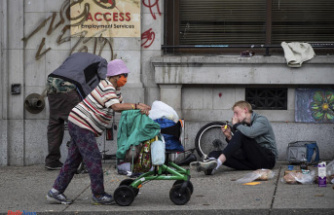Schwerin (dpa / mv) - In Mecklenburg-Western Pomerania, according to a survey by the Parity Welfare Association, the proportion of poor people has decreased. In a comparison of the federal states, MV improved from 13th place to 10th place. According to the report published on Wednesday, 18.1 percent of citizens are classified as poor or at risk of poverty. In the previous year it was 19.8 percent. A new high of 16.6 percent was reached across Germany. 13.8 million people in Germany are poor, 600,000 more than before the corona pandemic.
Bringing up the rear among the states is Bremen (28 percent), while people in Bavaria are least affected by poverty (12.6 percent). "The fact that poverty in Mecklenburg-Western Pomerania has tended to decrease is a good signal," said Friedrich Wilhelm Bluschke, chairman of the regional parity association. Nevertheless, it is high. Families struggle to pay their utility bills or rent. "Some panels are reporting overload." Western Pomerania is regionally most affected in the state.
In rich countries like Germany, poverty is not defined by direct hardship such as hunger or homelessness, but by household income and the resulting opportunities for social participation. The at-risk-of-poverty rate indicates the proportion of the population that has to get by on less than 60 percent of the median income. For a one-person household in Germany, this limit was 1148 euros per month last year.












